|
|
|


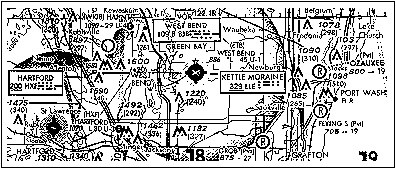
Upcoming Chapter Meetings - December off, January social
First Lancair in Chapter Under Construction - The
Drickens' dreamplane
Mailbag - Newsletter mailing policy, chapter home page
From the Editor - Chapter survey, newsletter name,
online member list
President's Message - On the road again
Builders' Corner - Already-built homebuilts
CFI Tips - Traffic pattern minimums, winter flying
Young Eagles Activity - September rally
Treasurer's Report - 1997 budget
Board Meeting Minutes - October and November meetings
New Members - The more the merrier
Classifieds - Buy, sell, barter
Officers, Teams, Committees - Omitted due to space constraints
On the Fly - Name tags, chapter patch contest
A Moment in History - Earl Stier

 NO CHAPTER MEETING IN DECEMBER
NO CHAPTER MEETING IN DECEMBER
 FRIDAY, JANUARY 17th - Social Dinner Meeting
FRIDAY, JANUARY 17th - Social Dinner Meeting
|
PLANS NIGHT - Review the drawings for popular
homebuilts RECOGNITION - Members' contributions and achievements SOCIALIZE - Talk airplanes and enjoy a great meal! |
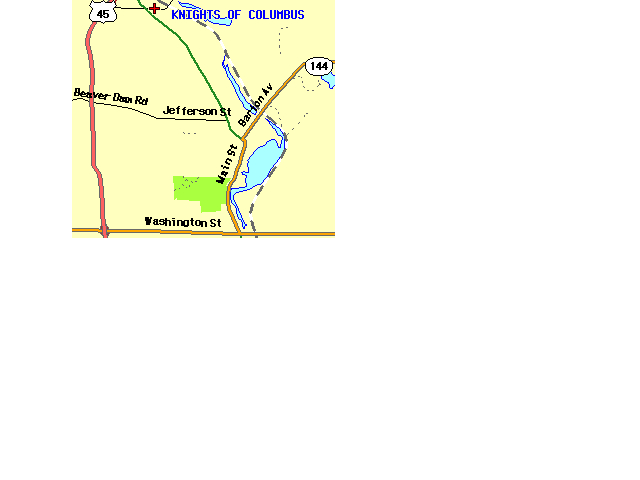 6:00 pm - Social, 6:30 pm - Dinner, 7:30 pm - Program
6:00 pm - Social, 6:30 pm - Dinner, 7:30 pm - Program
COST: $13.00 per person LOCATION: Knights of Columbus, 3245 Lighthouse Lane, West Bend, 414-334-9849 (Hwy 45 north to D, right on D about 1/4 mile, left on Lighthouse Lane, KC Hall on right just past first house) |
 WEDNESDAY, FEBRUARY 19th - Chapter Meeting
WEDNESDAY, FEBRUARY 19th - Chapter Meeting
| 7:00 pm - Ratings Review, WW-II Artillery Spotter, Homebuilders' Static Display, Chapter Patch Vote (location and speaker details in the next newsletter) |

Even as you step into his garage/workshop you
know this is where things happen. Jim Dricken is
a card-carrying confirmed builder. Not only did
he build his own home, he has created, modified or
maintained countless vehicles, machines and
gadgets. As you walk around his work area you are
confronted with homemade devices from his
microwave-activated front gate opener and a
homemade log splitter to interesting mechanical
curiosities like a spotless surplus cylinder from
a huge Wright Cyclone R3350 radial engine. In
Jim's own words he is interested in anything
mechanical especially if it has an engine. As the
owner of VanBeek Cycle in West Bend he gets plenty
of professional hands-on time selling and
servicing Harleys. In the spirit of the
traditional busman's holiday (going out for a
drive), Jim's mechanical interests spill over into
his personal life.
The reason for my visit was to check out the
rumor that a Lancair was under construction in the
chapter. A few steps into his workshop confirmed
the rumor. There in center stage of the work area
stood a "Fast Build" Lancair 320 Mark II sitting
on its gear with an engine and prop in place.
Admittedly, Jim is at the beginning of a long haul
to complete the plane despite the jump start given
by the manufacturer. At this writing he has put
less than 100 hours in, mainly working around the
wing root and getting the landing gear working.
The kit was purchased from another builder in
Missouri who had purchased it from the factory and
soon afterwards discovered that he would not be
able to complete it.
As anyone who has visited the numerous kit
manufacturer displays at the Oshkosh Fly-In knows,
most kits are bare bones airframes for which you
must select and install your own instruments,
avionics, engine, prop and interior. Oh, by the
way, you add these to the cost of the basic kit,
too!!! First things first is to digest the
massive manual which accompanies your purchase of
all those pieces of tan fiberglass. Jim showed me
the huge document which is meant to be helpful but
will certainly scare off the curiosity seekers.
Since my purpose in visiting Jim was to not
only check out the rumor but to perhaps inspire
other chapter members to take the plunge and
either tackle a project or assist in one, I chose
to focus more in this article on getting up close
and personal with the builder. A later article
will serve as a progress report on construction.
There's probably no such thing as a "typical
EAAer", but the one thing we all share in common is
a love of airplanes and flying. Jim is no
exception. The aviation virus first infected Jim
at the age of 10, when he was given a ride in an
old faded blue and white Apache that still sits on
the ramp at West Bend Airport. The disease was
dormant for fourteen years till he went out one
day for one of those "demo" rides. He booked
himself for his first dual lesson the very next
day. The rest is history. Within a year he had
his private license and was hooked for life.
Business and family prevented him from starting up
an intensive flying career but the die had been
cast. In 1984 when the Lancair first appeared on
the market it was "Love at First Sight". As
business and family obligations have eased, the
time was ripe for him to make his move. An ad in
Trade-A-Plane was the catalyst that reactivated
his juices.
Jim is married and his wife Sandy joined us
in the workshop for awhile to share her enthusiasm
for the project. They have three children, one of
whom is still living at home. Sandy herself is
often seen at chapter meetings and has created
several designs for the chapter patch contest.
Browsing through the Lancair construction manual,
one sees that Jim has
dutifully logged the steps completed, occasionally
with remarks. One step involving the joining of
spar and the fuselage recommended that another
person assist the builder. In neat lettering he
had recorded "Assisted by my lovely wife."
Judging from the attention to detail seen in
other projects he has completed, Jim is more than
capable of completing the extensive process of
finishing the airframe (well under way in the
Fast-Build version) and installing all the
instrumentation, avionics (it will be VFR only
with GPS), and the plumbing necessary before
painting and roll out. Drawing on his engine
experience through his dealership he approaches
engines with a professional mind. Although the
Lycoming 0-320 he purchased is a mid-time engine
(1300 hrs) he plans to major it himself and has
obtained a stack of service manuals to guide him.
Clearly, Jim takes pride in his workmanship, and it
will be no surprise if some day his Lancair is
parked wingtip to wingtip with its kin at some
Oshkosh Fly-In. Stay tuned!
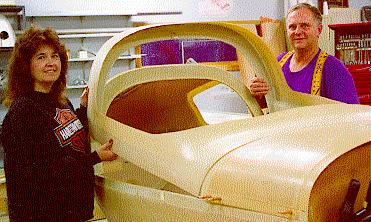
Jim and Sandy demonstrate a trial fit of
the canopy
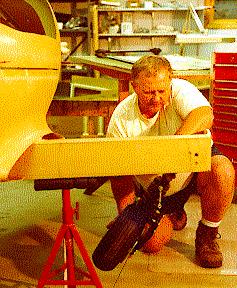
Jim tests the retractable mechanism


 Mailbag
Mailbag
 From Russ Kaye, Publishing Team Chairman:
From Russ Kaye, Publishing Team Chairman:
Our policy for multi-memberships at the same address so far has been that I've contacted those members that I've been able to and asked their preference. All that I've talked to so far have said to save the extra stamp and send only one copy per address. If desired by the membership, I will be more than happy to send one copy to each and every member.
(Members sharing an address are urged to convey their mailing preference to Russ Kaye at 414-284-3695 or rkaye@execpc.com. Also, some members reported not receiving their copies by mail. Our Publishing Team has made changes to the newsletter seal as suggested by the Post Office. - Editor)
Chapter Home Page
 Kris Hinterberg writes:
Kris Hinterberg writes:
The newsletter looks good to me. On the homepage could you add the Ninety-Nines to our aviation links? I know most of our members are men, but there are a few of us girls who would like to be recognized. The Ninety-Nines are officially recognized by the EAA to do Young Eagles flights, and can be a source of help and woman-power in some of our other projects. Thanks for doing this.
(The Ninety-Nines link has been added. Members are urged to submit their favorite aviation links. - Editor)
 From Michele Boland, keeper of "Michele's Hangar", an online
list of hundreds of aviation links:
From Michele Boland, keeper of "Michele's Hangar", an online
list of hundreds of aviation links:
I would be glad to add a link!
(Our chapter home page is now listed
in "Michele's Hangar of Links". Check it out!
Follow our home page links to Michele's Hangar. - Editor)



By now most of you know that I am gathering data on our members'
aviation interests through a chapter survey that was handed
out at chapter meetings. Those who still
have their copy are urged to complete it and mail it to me.
Members who need a copy should leave their name and mailing
address in a message to me at 414-375-2228.
Once we have enough input, I will publish the results in
the newsletter.
As mentioned in the last newsletter,
we need to decide as a group if we want to name the newsletter,
and if so, what the name should be. Here are the suggestions
to date:
The Aero-Gram, Chapter Chatter, Cloud Chatter, Cloud Cruisin',
Crosstalk, Empennage Epitaph, Hangar Flying, High Performance,
The Home Field, Kettle Aero-Gram,
Kettle Chatter, Kettle Flyer, Plane-Talk,
Prop-Talk, Rudder Flutter, Rudder Utters, Runway Rambles,
Tailwinds, Turbo-Chatter, VASI Vibes, West Bend Your Ear,
Wing Wags.
Our official EAA chapter member list is now available to
you online. Go to our web page, go to Chapter Members, and use
the first link ("Click here to download the current member list").
The list is being maintained by our Membership Chairman,
Dan Staehler.
For those of you reading the hardcopy newsletter, remember that
each issue is available online in full color.


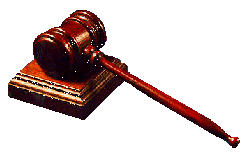
One thing that's apparent about other countries is the lack of
general aviation of any kind that we enjoy here at home. In 60 days
of travel all over the world this year I can count the number of
private planes I saw on one hand - 2. About the same that I would
see on a 0 degree day in Wisconsin.
So the next time you are tempted to complain about the weather,
think of the freedoms we enjoy in aviation here in this country.
Don't take them for granted. Promote them! You'll be able to
enjoy them (and the weather) a lot more.
I'm not sure what's worse, being stuck in 80 degree weather for
a couple of weeks, or not being able to fly one's airplane for
two weeks. Guess I shouldn't complain. Travelling always brings
out contrasts - we long for things we leave behind and complain
about them when we return home.


Pilots may wonder about buying a craft that someone else may have been putting together in their garage on weekends for the last 10 years. Or one can see it as a painstakingly hand-crafted airplane, built by the person whose life depends on the quality of construction.
It is always a good idea to decide what you want the plane for. Aerobatics, short field performance, cross country and float flying are just some of the missions that will dictate what type of craft you will be looking for. Once that's decided, you can start searching for models that fit your price range. When you have narrowed it down to a few choices, try to find out as much as you can about them. Try and get a ride in each. Pilots are always happy to show off their planes.
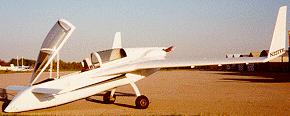 Kyle Howard's Varieze |
Along with EAA (which one should be a member of) there are organizations of like minded pilots and builders. For us canard types, it is the Central States Association. We get quarterly newsletters, as well as have fly-ins throughout the year. Join the association that supports your interests. Not only will the membership be one of the best sources of information on your type of plane, this may be the best place to find a plane for sale. Also, the organization newsletter will have builders selling off plane parts you may need. I recently bought a new set of wheels and brakes at around 1/2 retail from a guy who has decided he no longer wants to build his plane.
Contact the seller and get some information. Things you are looking for at this stage are hours on the airframe, hours on the engine (rarely will you find a homebuilt with a new engine), instrumentation, cover and finish, damage history (if any), and why the seller is selling the plane. If you are still interested at this point, ask the seller to send detailed pictures of the outside and inside of the plane along with photocopies of the aircraft and engine logs. Even though the builder can perform his/her own maintenance, you still want to see things like compression checks, equipment change outs, and the required inspection entries. The logs should be thorough, as shoddy logs may indicate shoddy workmanship.
Find out what kind of minimums your insurance company has for homebuilts. For mine, I needed 2 hours in type before they would insure me. Shop around as it varies with aircraft type and pilot experience.
Now if you are still interested, it is time to see the plane. You should have someone with you who knows that type of plane to look it over. I will not go into how to examine a candidate as that is another article in itself. Make sure you have ample time for a thorough examination as well as time for flight.
The plans should be included in the purchase. If you have to find a set after purchase on the open market, that could be tough. You and your mechanic will need them to reference during your inspections and/or repairs.
The required inspection is called a compliance inspection. It must be performed by an A&P (as opposed to an AI for a production model) on a yearly basis, just like the annual. Because you are not the builder, you must comply by the same FAR's that dictate how much work an owner can do on his/her own plane.
One of the benefits of owning a homebuilt comes with repairing it. You do not need STC'd parts. One should always use aircraft quality hardware and equipment, but a part without an STC will cost much less than the same part with an STC (example: the B&C starter - popular on homebuilts - is $50 less without the STC).
If you can, stay in touch with the builder. A Christmas card or letter with a picture of the plane and a few words on the fun you are having with it will go a long way in case you need to contact him/her with a question in the future.
I have immensely enjoyed my Varieze. It has been
fun to fly. Along with the way it flies, some of
the other fun aspects about owning a homebuilt are
the conversations it creates when you visit
airports, the camaraderie you have as a member of
an organization of like-minded pilots, always
having a place to park at Oshkosh and other
fly-ins, as well as knowing that your plane is as
unique as you!


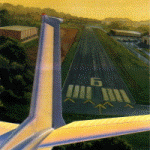
What is not good is unfamiliarity with (or
disregard of) VFR requirements while operating in
the Class E airspace above the 700' AGL base of
the transition area overlying the approximately 8
statute mile radius around the airport where
clearance below clouds must be at least 500'.
Flying closer violates the current regulation.
Arbitrarily lowering the landing pattern altitude
closer to the ground defeats the purpose of the
transition area which was designed to protect the
several instrument approaches published for West
Bend and presents a very real possibility for
collision with inbound IFR traffic which can
descend to as low as 500' AGL before breaking out
of clouds (600' if circling for landing.)
Simple math... Clouds can be no closer to the
surface than 1500' AGL (2400' MSL) for VFR flight
to be conducted in the landing pattern. VFR
departures can be made clear of clouds while
beneath the depicted transition area in the Class
G airspace, but the potential for unreported
inbound IFR traffic is still there.
In spite of the above, FAR 91.155(b)(2) currently
(and weirdly) allows anyone except student and
recreational pilots to fly in the pattern with
only a mile visibility and clear of clouds...
at NIGHT! Anyone wishing to take advantage of
FAA's offer to play Russian Roulette, please call
me first so I can stay safe at home! Hopefully
all others will abide by the "daylight" rules.
The published small aircraft landing traffic
pattern at West Bend is, and has been 1000' AGL
for at least 40 years that I know of. It is given
in the Airport/Facility Directory and several
other aviation publications, and is pretty much
standard for most uncontrolled airports. Local
and transient pilots complying with this
requirement will see and be seen by each other as
appearing to be in line with the natural horizon -
and that's good for safe spacing and avoidance.
Tip #4, by Mike Schram, CFI, West Bend Air
BRRRRRR!
First, sorry I misspelled GORRY intersection in
tip #2 - my spell checker is now trained.
Second, I believe it's safe to say that "old man
winter" is upon us for another winter wonderland
in Wisconsin. The other day I watched two
well-dressed businessmen board their aircraft
demonstrating a death wish or just sheer
stupidity. The small single had been tied on the
line overnight and had collected a dose of frost
on the windows and wings. The preflight consisted
of a brief look under the nose and a quick kick of
the three tires and they were in the plane. The
temperature was 19 degrees F in case you’re a new
metar reader and the wind was out of 3OO2Og28.
Neat preflight - No gas check? No oil check? No
control surface check? No frost removal? No
preheat? Probably no checklist inside either
because there was no beacon and no communication
as they left. The aircraft taxied to 31 and as it
began to roll it coughed and quit dead. They
restarted and managed to get flying at about WBA.
It appeared to climb at the rate of a 150 with
full flaps and max load.
Smart winter pilots:
Now let's analyze Mike's ten commandments of winter
flight. It all comes down to common sense. Think
first, analyze and prepare for the risk, and treat
your bird with warm and gentle hands - she does
get brittle when it's cold. Don't get a brief
printout from Weathermation - CALL FLIGHT SERVICE
1-800-WX-BRIEF and let the experts help you make a
good weather decision. Remember you help pay
their salary and activity at their post ensures
proper staffing and protects their job, too. Last
and most important, fly safely and enjoy the
smooth, pristine beauty of our frozen winter
wonderland.
See you in our frozen skies.


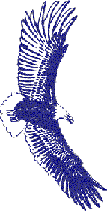
September 28th, 1996 started out as a dark and
dreary day for our Young Eagle Flights. We
planned for 30 to 35 Y.E. (Young Eagles) and 32
were flown from West Bend that morning.
The following Chapter 1158 members provided
support for this event: Allan Price (9), Ken Seidl
(10), Kris Hinterberg, Jim Retzlaff and Dan
Staehler. Kris also provided demonstrations to
the parents and kids on obtaining weather reports.
Jerry Proell, from Chapter 18, came up from
Capitol Airport with 9 Y.E. and stayed on to fly
a total of 13.
Jolene Klinzing, one of the Y.E., also helped in
recording pilot data and completing the Flight
Certificates.
Jerry and I flew to Hartford and offered to fly
Y.E. and only one came out.
A total of 33 kids were flown.


Proposed 1997 Budget
INCOME EXPENSE
Dues (80@$10) $ 800.00 Newsletter Postage (6x100@$.32) $ 192.00
Initiation Fees ( 9@$ 5) 45.00 Meeting Notices Postage (6x100@$.20) 120.00
Meeting Beverage & Raffle 175.00 Annual Report Fee 10.00
Fund Raisers 500.00 Name Tags (9@$3.50+tax) 34.00
Other (e.g. patch sales) 150.00 Insurance 40.00
Capital Expense 250.00
Special Projects/Savings 424.00
Chapter Sign 100.00
Chapter Patch 250.00
Movie Screen 150.00
Misc Expense 100.00
========= =========
$1,670.00 $1,670.00


October 2, 1996 Meeting -
Present: Howard Kaney, Richard Feldschneider, Allan Price,
Glen Brandt, Steve Roensch, Don Brinkley, Allen Bruggink,
Ron Champeny, Dan Staehler
»Now that we have a Wisconsin corporation charter, we have
been accepted by the Experimental Aircraft Association
headquarters as EAA Kettle Moraine Chapter 1158.
»We have agreed to set October 1, 1996 as the cutoff date
for status as a charter member. We will submit bylaws as
required by the EAA knowing that we can modify them later
to suit our needs.
»Our treasurer reports that we have more than $900 in the
bank and that $467 of that amount is from the Airport Open
House.
»Allan Price, who has been acting as membership chairman,
relinquished those duties this day to Dan Staehler. Price will
finalize the list of members who qualify for charter status
and report to Staehler. In addition, Price has agreed to
interview all future new members and write a brief biography
for our newsletter.
»Our Program Committee impressed us all by submitting a list
of proposed programs for the rest of 1996 and all of 1997.
The board will study the proposal in more detail before
publishing the program schedule.
»It was felt that our members might like to vote on possible
names for our newsletter. Therefore, members will be urged
to plumb their creative depths and submit their choice of
names so that at a future meeting we can select a name by
popular vote.
»This board authorized the maximum expense of $50 to
purchase an EAA jacket as a prize to the winner of the
Chapter 1158 patch design contest.
»We discussed badge (name tag) designs. Before any action
is taken, we will seek estimates, including setup charges,
not to exceed $275.
November 6, 1996 Meeting -
Present: Howard Kaney, Richard Feldschneider, Allan Price,
Glen Brandt, Steve Roensch, Don Brinkley, Allen Bruggink,
Ron Champeny, Dan Staehler
»We discussed the 1997 budget, which will be detailed in the
treasurer's report. Upon completion of discussion, the
budget was approved.
»Because we regularly meet in a large aircraft hangar with
helicopters departing and arriving nearby, the board agreed
that the use of a public address system is necessary at our
meetings. We authorized an expense of $250 for a PA
system subject to the approval of the membership.
»The board verified that we will not have a December
meeting. Furthermore, we will substitute a social gathering
for the January meeting. Arrangements are being made for a
dinner meeting January 17 at the West Bend Knights of
Columbus Hall. Members should feel free to bring their
family.
»Richard Feldschneider reported on the qualifications
needed for the positions of Tech Counselor and Flight
Advisor. These are positions that most EAA chapters are
required to fill so we will be looking for suitable
candidates.
»Because we have had no samples submitted, the chapter
patch design contest will be extended to the next general
meeting, which will be in February.
»The board will meet next on January 8.


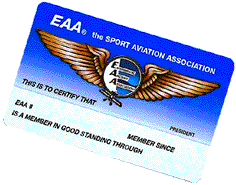
John Dropik,
James Esselmann,
Larry Hellmuth and
Jeff Koenig
Welcome aboard!


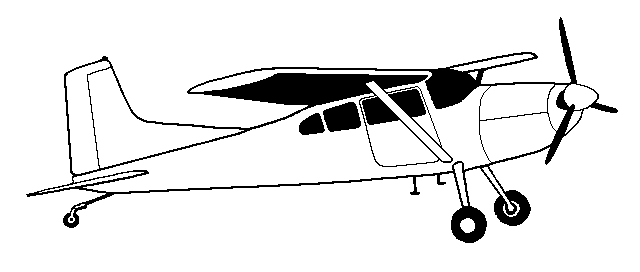


Our name tags have been made and are now available. If you didn't pick up your tag at the November meeting (where you missed an excellent talk on high-altitude reconnaissance, by the way), get it at the January Social, or call Dick Feldschneider at 414-677-3416. Name tags are paid by each member's initiation fee. Chapter patches will carry a nominal purchase fee.
Chapter Patch Design Contest Deadline Extended
The deadline for the chapter patch contest has been extended to
our next chapter meeting, which is February 19th.
The winner will receive an official EAA jacket in
their size. Put your design on an 8½x11 sheet of paper, and
get it to Allen Bruggink (335-6459). We will reduce it to the
approximately 3 inch diameter patch size. All patch designs
should include "EAA Chapter #1158" and "West Bend, Wisconsin"
or "West Bend, WI". Remember, the patch size is only about
3 inches, so don't get too carried away with detail.
Be sure to attend the February meeting to get a chance
to vote.


The West Bend Airport day-to-day operations in
the mid 1940's were handled by Earl Stier, a World
War II fighter pilot, who trained pilots,
transported goods and people, sold fuel and
repaired aircraft. The airport consisted of three
hangars and two unlit grass runways.
In the mid 1950's, the airport purchased an
additional 206 acres, and the northwest-southeast
runway was relocated and paved to 75 by 3000 feet.
The other runway was paved later that decade.
Source: West Bend Daily News


This and all Kettle Moraine EAA Chapter #1158 newsletters are
provided for your enjoyment only. No claim is made and no
liability is assumed, expressed or implied as to the accuracy
or safety implications of any material presented. Viewpoints
of the writers are not necessarily those of this or any EAA
Chapter or of the Experimental Aircraft Association (EAA).
Use of any of the material presented, whether by applying,
copying or quoting, is done solely at the risk of the user.
  Chapter Newsletter Index Chapter Newsletter Index
|
  |


 Kettle Moraine EAA Chapter #1158 Webmaster
Kettle Moraine EAA Chapter #1158 Webmaster